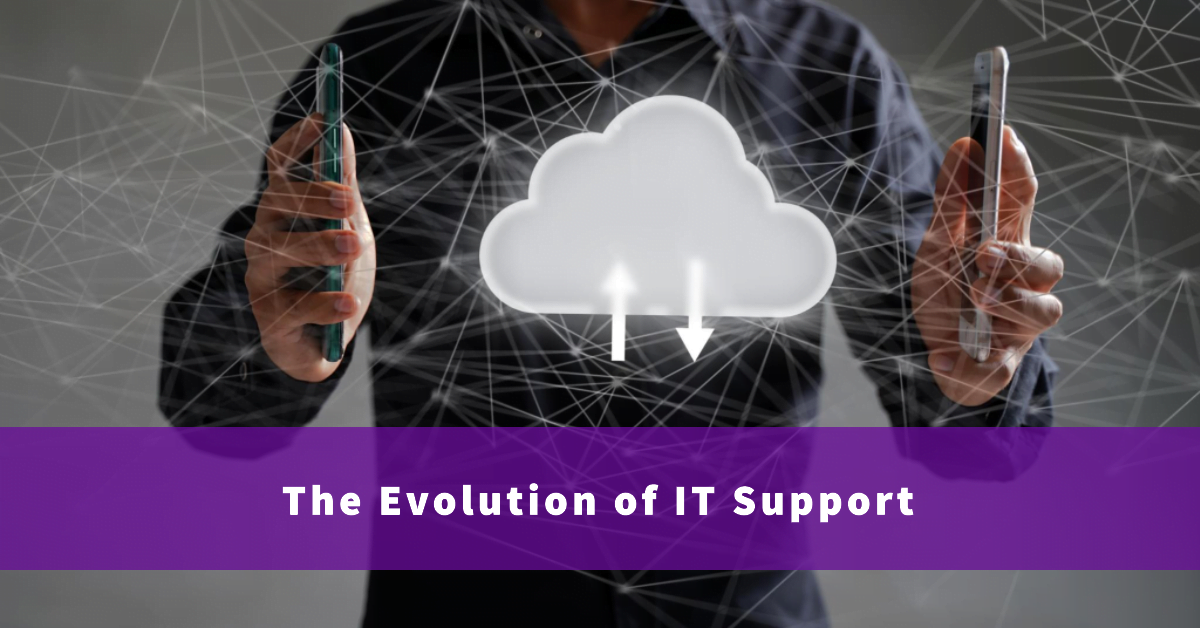
How has IT support changed over the years?
If you’ve ever wondered, “How has IT support changed over the years?” you’re not alone. This question is more than just a trip down memory lane; it’s a critical inquiry into the technological advancements that have shaped our world. Let’s explore the evolution of IT support from its early beginnings to its current state, and even venture some educated guesses about its future.
IT Support: From Early Beginnings to Critical Importance
In the early days, IT support was a mere afterthought, often relegated to the basement of an organisation. Fast forward to today, and IT support has become the backbone of modern business operations. It’s not just about fixing computers anymore; it’s about ensuring the seamless integration of technology into every facet of an organisation. Source: History of Computing
What is Information Technology?
Before diving into the evolution, it’s essential to understand what Information Technology (IT) encompasses. IT is the use of computers, networking, and other physical devices to store, process, and transmit information. IT support, therefore, is the service that ensures all these components work together efficiently. Source: What is IT?
The 1960s: The Dawn of Computing
The 1960s were the era of mainframe computers. These behemoths were expensive and required specialised knowledge to operate. IT support was primarily focused on hardware maintenance and basic troubleshooting. Source: History of Mainframe Computing
The 1980s: The Personal Computer Revolution
The 1980s were a watershed moment for IT support, thanks to the advent of personal computers (PCs). The concept of a “help desk” emerged, where IT professionals could assist end-users with software and hardware issues. This era marked the beginning of software support as a critical component of IT services. Source: History of Personal Computers
The 1990s: The Internet and Global Connectivity
The 1990s brought the internet into the mainstream, and with it came a new set of challenges and opportunities for IT support. Now, besides hardware and software, IT professionals had to manage network connectivity and security. The concept of remote support was born, allowing IT support to assist users without being physically present. Source: History of the Internet
The 2000s: The Age of Specialisation
The new millennium saw the rise of specialised IT support roles. Concepts like “Break-Fix,” “Verbose Logging,” and “Defensive Programming” became standard practices. IT support also started to use virtual knowledge bases and swarm solving techniques to enhance efficiency. Source: ITIL Best Practices
What Has Changed: The Present
Today, IT support is more versatile than ever. Automation is streamlining repetitive tasks, and there is an increased focus on cybersecurity. The rise of cloud computing and the Internet of Things (IoT) has expanded the scope of IT support to include a wide range of services and technologies. Source: Current Trends in IT
The Future of IT Support
The future is promising yet challenging for IT support. Automation and AI are expected to handle routine tasks, allowing human experts to focus on more complex issues. Cybersecurity will continue to be a significant focus, given the increasing number of cyber threats. Omni-channel support and online face-to-face support are becoming the norm, enhancing the user experience.
Conclusion
The evolution of IT support is a fascinating tale of innovation, adaptation, and forward-thinking. From the rudimentary practices of the 1960s to the highly specialised and automated services of today, IT support has come a long way. As technology continues to evolve, so will the field of IT support, always striving to meet the ever-changing needs of businesses and individuals alike.
